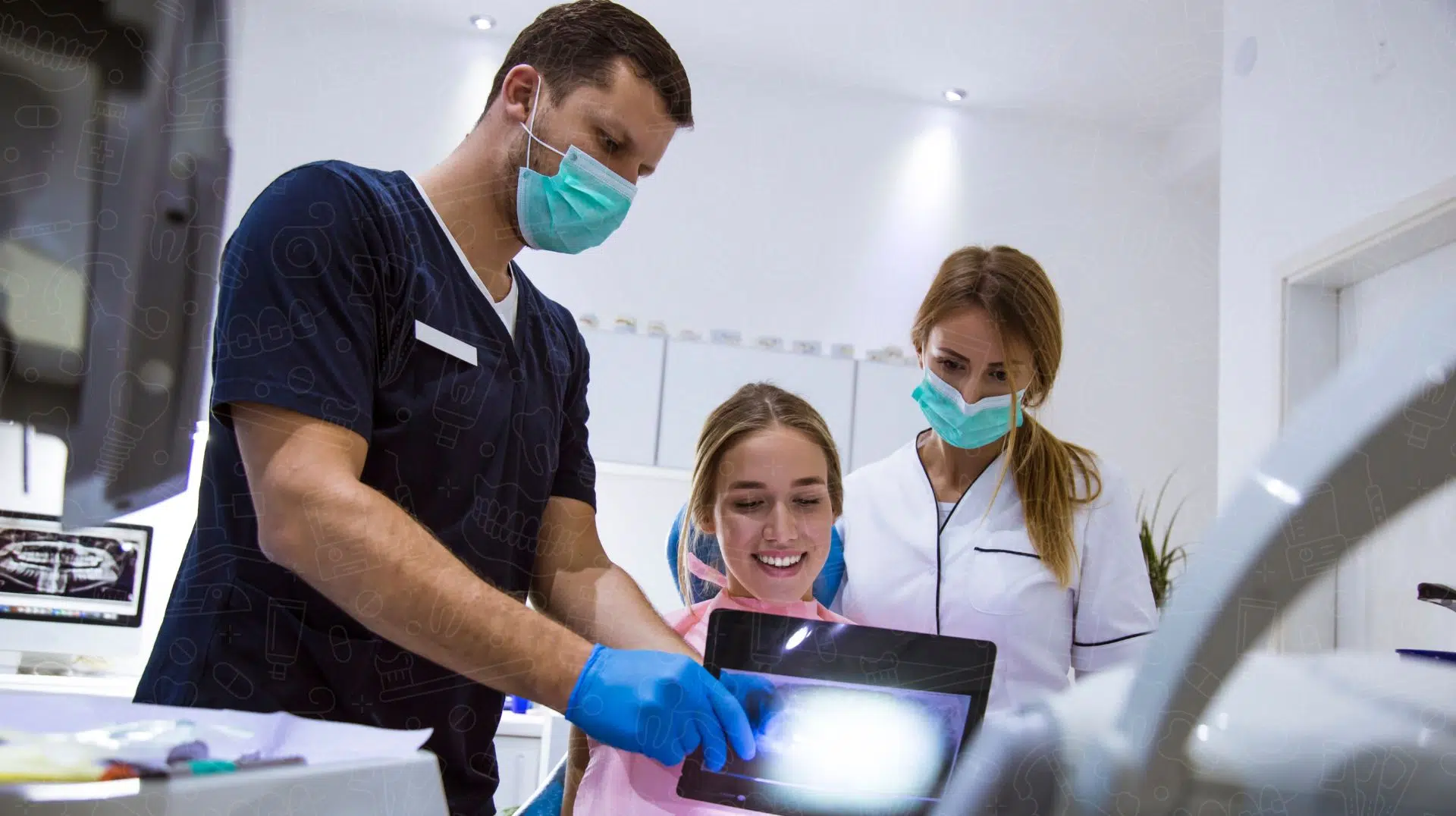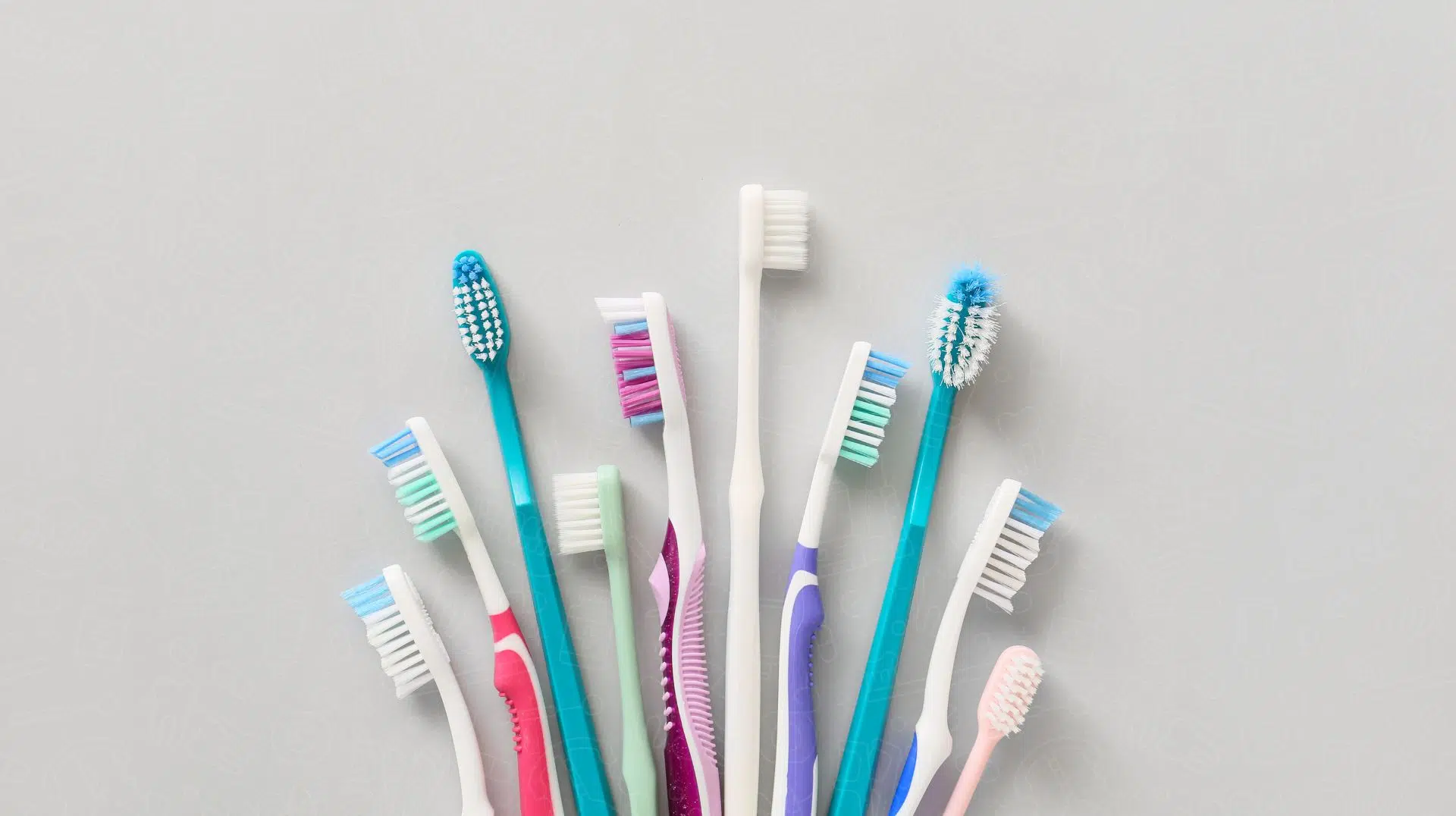Introduction
Dental emergencies can be distressing, and knowing how to respond promptly is crucial for minimizing pain and preventing further damage. In this comprehensive guide, we’ll empower you with the knowledge to handle various dental emergencies effectively. From sudden toothaches to knocked-out teeth, we’ve got you covered with practical tips and step-by-step instructions to navigate dental crises with confidence.
Understanding Dental Emergencies: Identifying Urgent Situations
A dental emergency is a situation that demands immediate attention to alleviate pain, prevent further damage, and preserve oral health. Recognizing signs and symptoms of urgent dental issues is crucial for prompt intervention and effective emergency care.
1. Definition of a Dental Emergency:
- A dental emergency is any oral health issue that requires immediate attention to prevent worsening of the condition or to address severe pain and discomfort.
- Examples include sudden and intense toothaches, traumatic injuries like knocked-out or fractured teeth, severe swelling, and uncontrolled bleeding from the mouth.
2. Emphasizing Situations Requiring Immediate Attention:
- Severe Toothache: Intense and persistent tooth pain, especially if accompanied by swelling, may indicate an underlying infection or dental abscess that requires immediate care.
- Knocked-Out Tooth: Time is of the essence when a tooth is completely knocked out. Quick action increases the likelihood of successful re-implantation.
- Fractured or Broken Teeth: Trauma resulting in broken or fractured teeth should be addressed promptly to prevent further damage and minimize the risk of infection.
- Uncontrolled Bleeding: Excessive bleeding from the mouth, whether due to an injury or dental procedure, requires immediate attention to prevent complications.
3. Importance of Recognizing Signs and Symptoms:
- Preventing Further Damage: Identifying urgent situations allows for swift intervention, minimizing the risk of further damage to teeth and surrounding tissues.
- Alleviating Pain: Recognizing signs of dental emergencies enables individuals to take immediate steps to alleviate pain, providing temporary relief until professional care is obtained.
- Preserving Oral Health: Prompt attention to dental emergencies is vital for preserving overall oral health, preventing complications that could lead to more extensive treatments.
4. Signs and Symptoms to Watch For:
- Severe Pain: Intense and continuous pain in the teeth, gums, or jaw.
- Swelling: Sudden and pronounced swelling in the gums or face.
- Bleeding: Uncontrolled bleeding from the mouth.
- Trauma: Injuries to the teeth, such as fractures or dislodged teeth.
5. Seeking Immediate Professional Care:
- Contacting Emergency Dental Services: Knowing when to seek professional help is essential. Individuals experiencing dental emergencies should contact emergency dental services promptly.
- Providing Information: When reaching out for emergency care, communicate relevant information, such as the nature of the emergency, pain level, and any visible damage.
Understanding what constitutes a dental emergency empowers individuals to respond effectively in urgent situations. By recognizing signs and symptoms early on, one can take proactive measures to address issues promptly, promoting better outcomes and preserving oral health. In times of dental crisis, swift action is key to mitigating pain, preventing further damage, and ensuring timely emergency care.
Emphasizing Situations Requiring Immediate Attention in Emergency Care
When it comes to dental emergencies, certain situations demand immediate attention to ensure swift and effective care. Recognizing the urgency of these scenarios is crucial for timely intervention and optimal outcomes in emergency care.
1. Severe Toothache:
- Description: Intense and persistent tooth pain, particularly when accompanied by swelling, may signal an underlying infection or dental abscess.
- Importance of Immediate Attention: A severe toothache is often indicative of an urgent issue that requires prompt professional care. Ignoring it may lead to complications and increased discomfort.
- Emergency Care Steps: Contact an emergency dentist promptly for an evaluation. Until professional care is obtained, individuals can use over-the-counter pain relievers and apply a cold compress to alleviate pain and reduce swelling.
2. Knocked-Out Tooth:
- Description: Time is critical when a tooth is completely knocked out. Quick action significantly enhances the chances of successful re-implantation.
- Importance of Immediate Attention: The viability of a knocked-out tooth decreases with time. Immediate attention increases the likelihood of preserving the tooth and restoring normal function.
- Emergency Care Steps: Hold the tooth by the crown (avoiding the root), rinse it gently if dirty, and attempt to reinsert it into the socket. If this is not possible, store it in a container of milk or saliva and seek emergency dental care immediately.
3. Fractured or Broken Teeth:
- Description: Trauma resulting in broken or fractured teeth requires prompt attention to prevent further damage and minimize the risk of infection.
- Importance of Immediate Attention: Broken or fractured teeth can expose the inner pulp, leading to pain and susceptibility to infection. Swift care is essential to address the issue and prevent complications.
- Emergency Care Steps: Rinse the mouth with warm water, apply a cold compress to reduce swelling, and seek emergency dental care for an assessment and appropriate treatment.
4. Uncontrolled Bleeding:
- Description: Excessive bleeding from the mouth, whether due to an injury or dental procedure, requires immediate attention to prevent complications.
- Importance of Immediate Attention: Uncontrolled bleeding can lead to further health issues and complications if not addressed promptly. Quick intervention is crucial for stopping the bleeding and ensuring the individual’s well-being.
- Emergency Care Steps: Apply gentle pressure to the bleeding area with a clean cloth or gauze. If bleeding persists, seek immediate emergency dental care or go to the nearest emergency room.
Understanding the urgency of situations such as a severe toothache, a knocked-out tooth, fractured or broken teeth, and uncontrolled bleeding is vital for effective emergency care. Acting promptly in these situations not only alleviates immediate pain and discomfort but also contributes to better long-term outcomes and the preservation of oral health. If faced with any of these emergencies, seeking professional dental care without delay is the key to a successful resolution.
Handling Sudden Toothaches: Dealing with Unbearable Pain in Emergency Care
Sudden toothaches can be excruciating, disrupting daily life and causing distress. Understanding the potential causes and knowing how to manage the pain at home while awaiting professional care is crucial in emergency situations.
1. Potential Causes of Sudden Toothaches:
- Decay or Infection: Sudden toothaches often stem from decay reaching the inner pulp or an infection within the tooth. Both situations can lead to intense and persistent pain.
- Gum Disease: Inflammation and infection of the gums can also result in sudden toothaches, especially if the condition has progressed to an advanced stage.
- Dental Abscess: A dental abscess, characterized by a pus-filled sac around the tooth’s root, can cause severe pain and requires immediate attention.
2. At-Home Remedies for Sudden Toothaches:
- Rinse with Warm Saltwater: Gently rinsing the mouth with warm saltwater can help reduce inflammation and alleviate discomfort.
- Over-the-Counter Pain Relievers: Non-prescription pain relievers, such as acetaminophen or ibuprofen, can provide temporary relief. Follow dosage instructions carefully.
- Cold Compress: Applying a cold compress to the outside of the cheek can help numb the area and reduce swelling.
- Topical Analgesics: Over-the-counter topical numbing gels or ointments can provide temporary relief when applied directly to the affected area.
3. Pain Management Techniques:
- Avoiding Trigger Foods:* Steer clear of extremely hot, cold, sweet, or acidic foods that may exacerbate tooth sensitivity.
- Elevating the Head:* Keeping the head elevated while sleeping can help reduce blood flow to the head and alleviate nighttime toothaches.
- Gentle Flossing:* If the pain is due to trapped food particles, gently flossing between the teeth can provide relief.
4. Seeking Professional Care:
- Schedule an Emergency Dental Appointment: While at-home remedies may offer temporary relief, it’s crucial to schedule an emergency dental appointment promptly.
- Communicate Severity to the Dentist: When seeking professional care, clearly communicate the severity and duration of the pain, any accompanying symptoms, and any at-home remedies attempted.
5. Warning Signs for Immediate Attention:
- If the pain is severe and persistent.
- If there is swelling or a pimple-like bump on the gums.
- If there is fever or signs of infection.
Managing sudden toothaches at home is a crucial skill in emergency care, but it’s equally important to seek professional dental care promptly. Home remedies can provide temporary relief, but addressing the underlying cause requires the expertise of a dentist. By combining at-home pain management techniques with timely professional care, individuals can navigate sudden toothaches effectively and pave the way for a healthier, pain-free smile.
Coping with Chipped or Broken Teeth: Immediate Care for Dental Injuries in Emergency Care
Dealing with a chipped or broken tooth can be alarming, but knowing how to take immediate action is crucial for minimizing further damage and ensuring effective emergency care. Here’s a detailed guide on what to do if faced with a chipped or broken tooth:
1. Immediate Steps for a Chipped or Broken Tooth:
- Stay Calm: Assess the situation calmly to determine the extent of the injury.
- Rinse the Mouth: Gently rinse the mouth with warm water to remove any blood or debris.
- Save Broken Pieces: If the tooth has broken into pieces, save as many fragments as possible. Place them in a clean container with milk or a mild saline solution.
2. Preservation Techniques for Broken Tooth Fragments:
- Milk Soak: Milk is an ideal preservative for broken tooth fragments. Soak the pieces in milk to help preserve the living cells on the tooth’s surface.
- Saline Solution: If milk is unavailable, a mild saline solution can be used to soak the broken tooth fragments.
3. Protecting the Injured Tooth:
- Cover Sharp Edges: If the broken tooth has sharp edges, cover them with orthodontic wax or sugar-free gum to prevent injury to the cheeks, tongue, or lips.
- Avoid Self-Repair: Refrain from attempting to glue the broken pieces together, as this can complicate professional repair.
4. Contacting Emergency Dental Services:
- Call Your Dentist: Contact your dentist immediately to report the dental injury and schedule an emergency appointment.
- Provide Details: Communicate the details of the incident, including the extent of the damage and any pain or discomfort experienced.
5. Importance of Bringing Broken Pieces to the Dentist:
- Enhances Restoration Options: Bringing the broken tooth fragments to the dentist provides them with the best chance to assess the extent of the damage and explore restoration options.
- Preserves Aesthetics: Preserving and reattaching broken pieces can contribute to a more aesthetically pleasing and functional restoration.
6. Additional Tips for the Journey to the Dentist:
- Handle Fragments Carefully: Handle the broken tooth fragments with care to avoid further damage.
- Keep Fragments Moist: Keep the broken pieces moist, either in milk or a saline solution, during transportation to the dentist.
7. Warning Signs for Immediate Attention:
- If there is severe pain or bleeding.
- If the broken tooth has exposed nerves.
- If there are signs of infection, such as swelling or pus.
Acting swiftly and effectively when dealing with a chipped or broken tooth is vital for successful emergency care. By following these immediate care steps, preserving broken tooth fragments, and promptly contacting emergency dental services, individuals increase the chances of optimal restoration and minimize complications. Remember, a quick response is key to safeguarding both the appearance and function of the injured tooth.
Emergency Protocol for Knocked-Out Teeth: Saving Smiles in Crisis
When a tooth is completely knocked out, quick and decisive action is crucial for successful re-implantation and preserving the smile. This emergency care guide provides clear steps on what to do in the critical moments following a knocked-out tooth incident.
1. Act Immediately:
- Time is of the essence in a knocked-out tooth emergency. Act swiftly to improve the chances of successful re-implantation.
2. Retrieve the Tooth:
- Handle the tooth by the crown (the visible part) and avoid touching the root to protect delicate tissues.
- Rinse the tooth gently with milk or saline solution to remove dirt or debris. Do not use water, soap, or any cleaning agents.
3. Attempt Re-Implantation:
- If comfortable, try to reinsert the tooth into its socket. Hold it in place by gently biting down on a clean cloth or gauze.
4. Preserve the Tooth:
- If re-implantation is not possible, preserve the tooth by placing it in a container of milk or a mild saline solution.
- Keeping the tooth moist is crucial for maintaining cell viability.
5. Seek Emergency Dental Care:
- Contact an emergency dentist immediately and explain the situation. Provide details about the incident, emphasizing the urgency of the situation.
6. Time-Sensitive Nature of the Emergency:
- Stress the importance of seeking professional care within 30 minutes to an hour for the best chances of successful re-implantation.
- The longer the tooth remains out of the socket, the lower the likelihood of a successful outcome.
7. Handle the Tooth Carefully:
- Avoid touching the tooth’s roots to preserve the delicate ligaments crucial for reattachment.
- Transport the tooth carefully to the dentist to prevent further damage.
8. Do Not Disregard Other Injuries:
- If the knocked-out tooth is the result of a broader facial or head injury, seek medical attention for those injuries as well.
9. Use an Emergency Dental Kit (If Available):
- Some individuals may have access to emergency dental kits containing a tooth preservation solution. If available, follow the kit instructions.
10. Warning Signs for Immediate Attention:
- If the tooth is a permanent (adult) tooth.
- If there is visible damage to the tooth or root.
- If there is severe bleeding or intense pain.
Emphasizing the time-sensitive nature of a knocked-out tooth emergency is vital for ensuring individuals understand the urgency of the situation. By following this emergency care guide promptly and seeking professional care within the critical timeframe, the chances of successful re-implantation are significantly enhanced. Saving a knocked-out tooth requires immediate action, making it a true race against time to preserve the natural smile.
When to Seek Professional Help: Knowing When It's Time for the Dentist in Emergency Care
Recognizing when immediate professional intervention is necessary is crucial for effective emergency care. This guide outlines scenarios that warrant prompt attention and provides guidance on finding emergency dental services.
1. Scenarios Requiring Immediate Professional Intervention:
- Severe Tooth Pain: Intense and persistent tooth pain, especially if accompanied by swelling, may indicate an underlying infection or dental abscess that requires urgent care.
- Knocked-Out Tooth: Time-sensitive, a knocked-out tooth necessitates immediate professional attention to increase the likelihood of successful re-implantation.
- Fractured or Broken Teeth: Trauma resulting in broken or fractured teeth should be addressed promptly to prevent further damage and minimize the risk of infection.
- Uncontrolled Bleeding: Excessive bleeding from the mouth, whether due to an injury or dental procedure, requires immediate attention to prevent complications.
- Signs of Infection: Swelling, redness, and the presence of pus may indicate an infection that requires prompt dental intervention.
- Loose or Dislodged Tooth: A tooth that is loose or partially dislodged requires immediate professional assessment to determine the best course of action for stabilization.
- Dental Abscess: The presence of a painful, swollen lump on the gums may indicate a dental abscess, requiring urgent attention to prevent the spread of infection.
2. Finding Emergency Dental Services:
- Contact Your Regular Dentist: Start by contacting your regular dentist. Many dental practices reserve time for emergency appointments and can provide guidance or schedule an urgent visit.
- Emergency Dental Hotline: Some areas have emergency dental hotlines or services that connect individuals with available emergency dental care providers.
- Local Hospitals: In extreme emergencies, especially if there is severe trauma or facial injuries, consider seeking help from the emergency department of a local hospital.
3. Information to Provide When Contacting a Dentist:
- Nature of the Emergency: Clearly describe the nature of the dental emergency, specifying if it involves severe pain, a knocked-out tooth, bleeding, or signs of infection.
- Any At-Home Remedies Attempted: Inform the dentist of any at-home remedies or first aid measures attempted, as this information can guide their assessment.
- Patient Details: Provide relevant patient details, including medical history, allergies, and current medications.
- Details of the Incident: If the emergency is the result of a specific incident or trauma, provide details about how it occurred.
4. Warning Signs for Immediate Attention:
- If there is severe pain, uncontrolled bleeding, or signs of infection.
- If a tooth has been completely knocked out.
- If there are visible signs of trauma to the face or mouth.
Knowing when it’s time to seek professional help in dental emergencies is essential for timely and effective care. By promptly contacting a dentist and providing pertinent information, individuals increase their chances of receiving the urgent attention needed to address the dental emergency and ensure the best possible outcome for their oral health.
Conclusion: Be Prepared, Keep Smiling
In moments of dental crisis, having the knowledge to respond promptly can make all the difference. This guide equips you with the essential skills to tackle common dental emergencies effectively. Remember, while these first aid measures offer immediate relief, seeking professional dental care is crucial for a thorough assessment and long-term solutions. Your proactive approach to dental emergencies ensures that you’re well-prepared to protect your oral health when it matters most.





